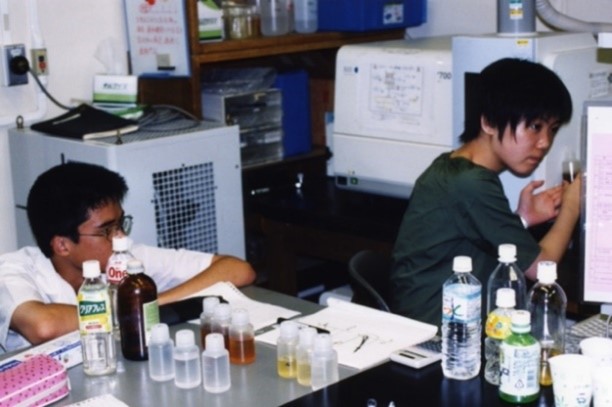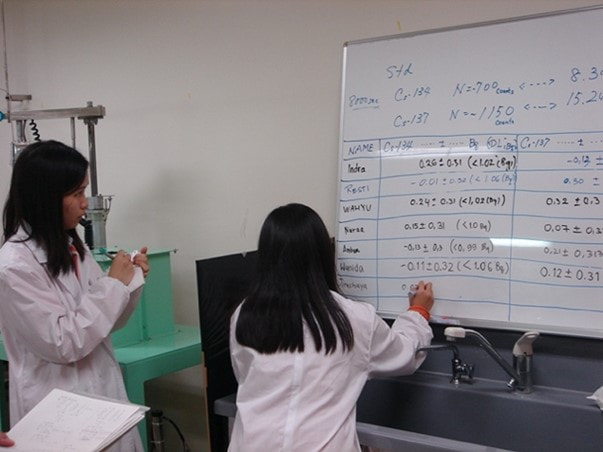| モジュール番号 Module |
3 |
|---|---|
| Credits ( if register as Inter Graduate School Classes Coursd of Hokkaido University ): | 2 |
| 責任教員(所属) Instructor name (Affiliation) |
豊田 和弘(北海道大学大学院地球環境科学院) Kazuhiro TOYODA (Faculty of Environmental Earth Science, Hokkaido University) |
| 責任教員連絡先(メール)/Instructor email | kazuhiro*ees.hokudai.ac.jp |
| 責任教員連絡先(電話)/Instructor phone | 011-706-4512 |
| Link to instructor bio or website | https://www.ees.hokudai.ac.jp/ems/stuff/toyoda/SeigLab_en/Toyoda.html |
| 実施期間/Periods | 27th-28th June, 1st-3rd July 2024 |
| Language | English |
| 実施場所/Class Locations | 北海道大学大学院地球環境科学院 その他 Faculty of Environmental Earth Science, Hokkaido University, etc. |
食品中に含まれる重金属や放射性核種による健康影響の評価方法について学びます。受講者は、主に消費する食品や関心がある食品を選び、それらを酸で分解した後、ICP質量分析計を用いて鉛、カドミウム、銅、亜鉛、ヒ素などの元素の含有量を定量します。そのデータを基に、摂取量を推定します。さらに、ガンマ線スペクトロメーターを使用して試料中の放射性核種の測定を行い、内部被曝量を見積もります。これらの情報を基に、食品由来の健康影響について各自で考察し、コースの最終日にその成果を発表します。
Participants will learn to assess the health impacts of heavy metals and radionuclides in food. They will choose foods they commonly consume or have an interest in, decompose them with acid, and then determine the levels of elements like lead, cadmium, copper, zinc, and arsenic using an ICP mass spectrometer. From this data, we will calculate the intake amount. Additionally, a gamma-ray spectrometer will be utilized to gauge the radionuclides present in the samples and to estimate the internal radiation exposure. Armed with this knowledge, students will evaluate the health implications of various food sources independently and present their conclusions on the final day of the course.
受講前に以下の文献をあらかじめ参照すること。 PLoS ONE 18(3): e0283420. https://doi.org/10.1371/journal.pone.0283420 PLoS ONE 9(11): e112791. https://doi.org/10.1371/journal.pone.0112791
The following literature should be consulted prior to the course. PLoS ONE 18(3): e0283420. https://doi.org/10.1371/journal.pone.0283420 PLoS ONE 9(11): e112791. https://doi.org/10.1371/journal.pone.0112791
1日目:分析試料の選定と影響評価についての講義
2日目:分析試料の分解操作と放射性核種の測定の開始
3日目:分析試料の重金属分析(オープンファシリティ)
4日目:放射性核種の測定結果の解析
5日目:健康影響について各自発表を行い、参加者間で検討を行う。
Day 1: Lecture on selection of analytical samples and impact assessment
Day 2: Start of disassembly of analytical samples and measurement of radionuclides
Day 3: Heavy metal analysis of analyzed samples (at the open facility of Hokkaido University)
Day 4: Analysis of radionuclide measurement results
Day 5: Individual presentations on health effects and discussion among participants

研究院のICP装置で飲用水の元素分析中 / Elemental analysis of drinking water in progress using ICP equipment at the faculty.

ガンマ線測定装置で測定した試料中の放射性核 種のBq値を白板に各自書き出す / Write down the Bq value of radionuclides in the sample measured by the gamma-ray measuring device on a white board by each person.
履修登録終了:2024年4月24日 / Registration CLOED:24th April 2024
重金属元素と放射性核種に関しては食品健康影響評価を自分自身でリスクを見積もれるようになる。課題に関連したアクシデントがあってもそのリスクの度合いを自分で把握できるようになる。
To be able to estimate the risk of heavy metal elements and radionuclides by oneself in the food health impact assessment. You will be able to assess the degree of risk of any issue-related accident by yourself.
分析試料の測定には元素分析には1g、放射性核種には30gぐらい必要となる。また、1日目に普段の飲用水のためのウルトラ洗浄済みの容器もあなたに渡すので、あらかじめ測定試料の準備しておくとよい。また、本講義で使用するガンマ線測定器には遮蔽がないため放射性核種の半定量までしか行えない。
For the measurement of an analysis sample, you will need about 1g for elemental analysis and 30g for radionuclides. You will also be given an ultra-cleaned container for drinking water on the first day, so it is advisable to prepare your samples in advance. In addition, the gamma-ray measuring device used in this lecture is not shielded, so it can only perform up to half quantification of radionuclides.